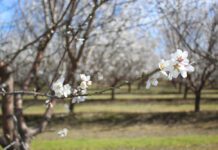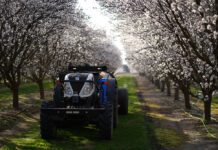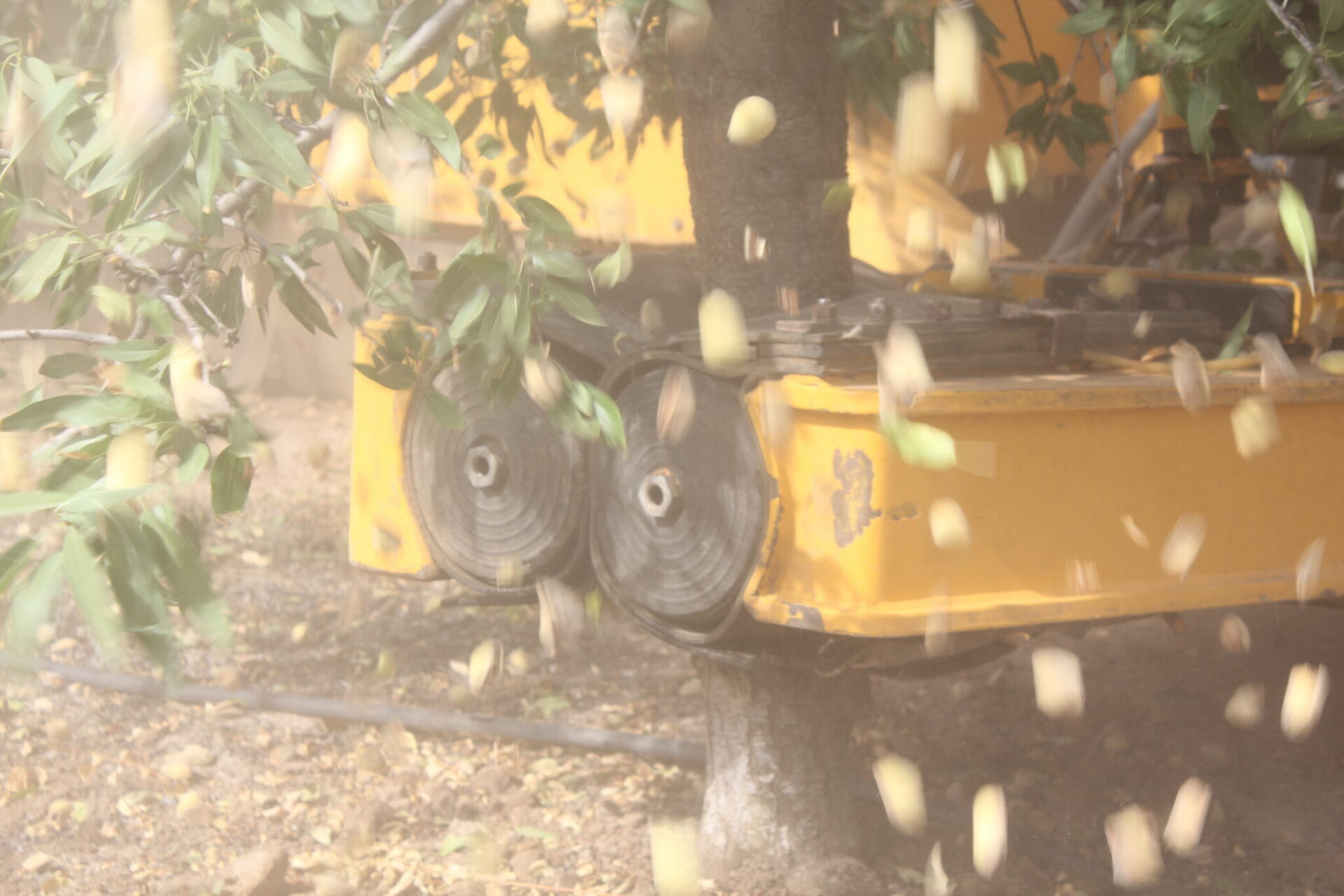
During August and September, there is a “whole lotta shakin’ goin’ on” in California’s Central Valley.
Mature nuts rain from almond, pistachio and walnut trees over a span of seconds when trunk shakers grip the trunks and send a wave of energy up the tree. Seconds later, the shaking ceases, the shaker releases and the harvester moves quickly to the next tree.
Efficiency of this harvest operation far outstrips the early use of long poles to knock nuts onto a tarp on the ground. Factors that contribute to the efficiency of the shake include its frequency, amplitude, tree size and shape, and crop load and maturity. Skill and experience of the shaker operator is important.
Shaking technology, efficiency and best practices are explained by UCCE Specialist Louise Ferguson, who has investigated mechanical harvesting of olives and pistachios.
The Shake
Frequency in hertz (one hertz is one cycle per second), amplitude in mm and the shake pattern combine to produce the final energy delivered to the trunk, said Ferguson. The final combinations are selected by how much force is delivered to the nut bearing shoots, which can be directly measured with sensors, and the final harvester efficiency, the percentage by weight of nuts in the bin compared to the crop on the tree.
Luckily, nuts are easily removed with trunk shakers when the abscission zone between the nut and stem is mature. The force to remove a nut is called the “detachment force”. Mature nuts detach easily within the first six seconds of a shake. Ferguson said the shake is transmitted best vertically upward; therefore, the best removal is achieved closest to the tree trunk. Shake transmits less well horizontally and poorly vertically downward. The further from the tree axis and the more horizontal or drooping, the less efficient the shake is transmitted. Luckily, the detachment force for most mature nuts is low.
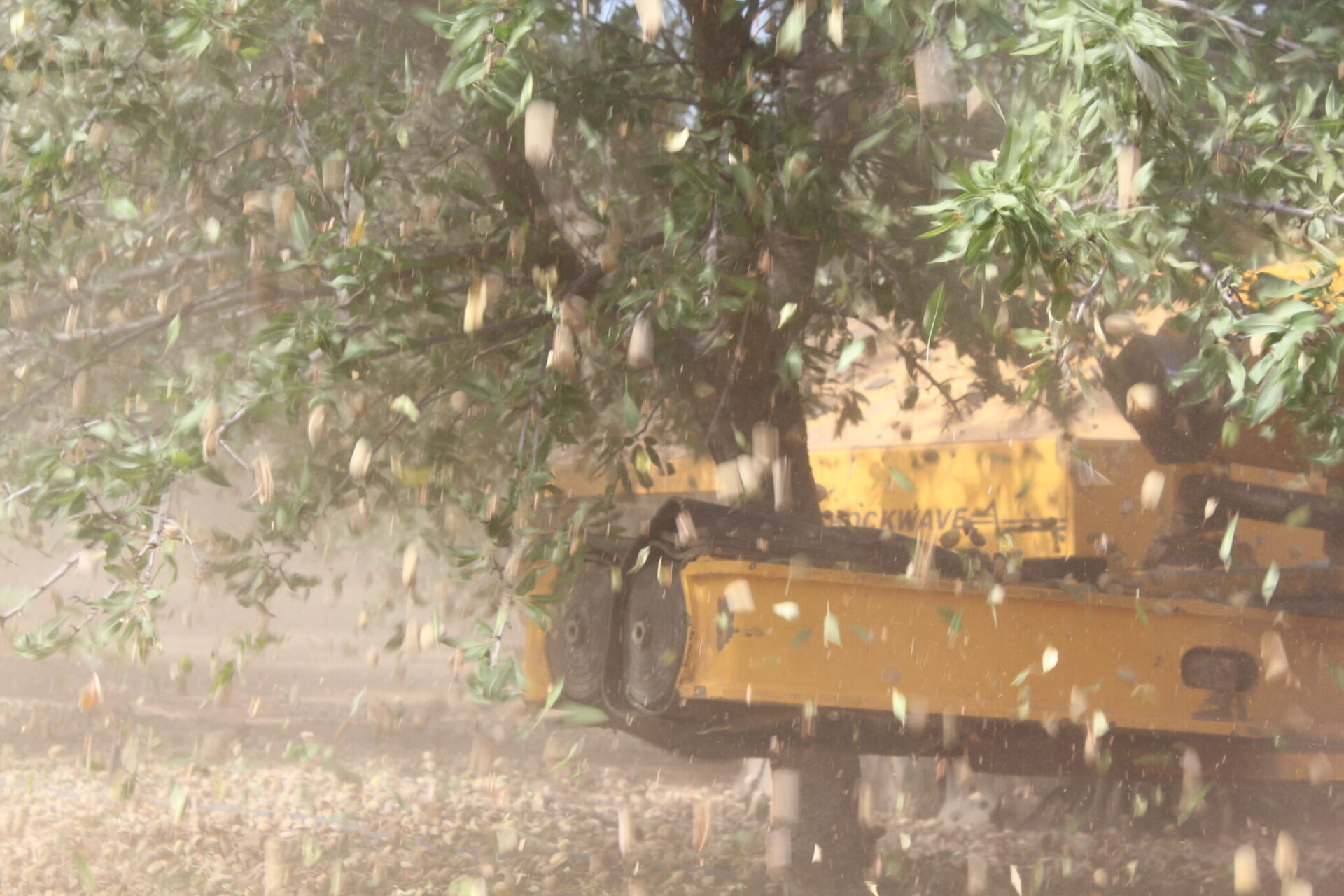
Tree Shape Contributes to Efficiency
Canopy architecture greatly influences harvest efficiency for the reasons detailed above. Before domestication, nut trees grew and bore crops perfectly well through the millennia until economics demanded regular annual crops and high final harvest efficiency. The only reasons to train and prune a tree are to control cropping and facilitate orchard operations, primarily harvesting. Therefore, evaluation of any training and pruning methods must include an evaluation of annual cropping and final harvester efficiency for at least six years, including the economics. This is particularly important in alternate bearing crops like pistachio and olive. Final harvester efficiency is defined as the percentage by weight of nuts in the catch frame versus the crop left on the tree and ground. Ferguson said other factors that affect final harvest efficiency are crop load per tree, maturity, tree uniformity and condition of the orchard floor.
When mechanical harvesting was first developed, the major misconception was designing a harvester for the existing trees and orchards. As Yoav Sarig, the Israeli mechanical harvesting engineer, noted, “…no mechanical harvesting of tree crops is successful without orchard modification.” This includes training, pruning and genetic modification, all with the objective of producing an efficiently harvested, regularly bearing tree.
Perhaps the best example in California is to contrast the table and oil olive industries. The table olive industry is declining because the large trees with a drooping habit cannot be efficiently mechanically harvested. The olive oil industry is expanding rapidly due to cultivars bred to remain small, crop early and be trained into a high density, mechanically pruned hedgerow harvested efficiently with adapted vineyard canopy contact shakers. Similarly, pistachio trees have long been trained and pruned to be harvested with adapted prune harvesters.
Observations during harvest can also increase harvester efficiency. Broken and unharvested branches should be removed, and in the latter case, perhaps this will be achieved during dormant pruning. If the dormant mechanical pruning does not, selective hand pruning cuts can be done after the mechanical pruning.
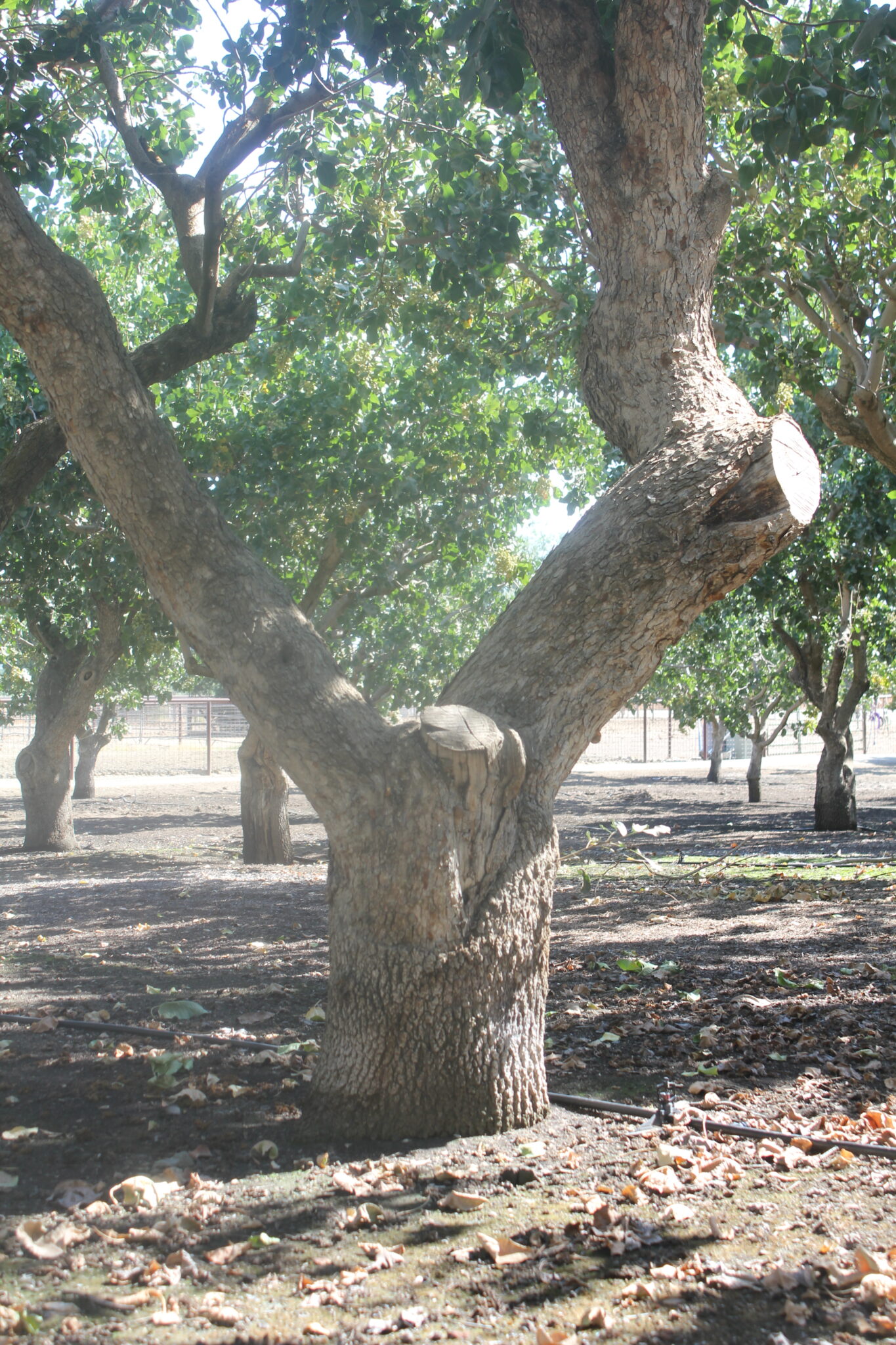
Machinery Innovations
Josh Jacquot with Pacific Distributing Inc. of Chico, representing Orchard-Rite, said they recognize that tree size and variety should be considered at harvest. Each nut variety requires different osculating acceleration patterns to release them from the tree, Jacquot said, while the tree itself can only withstand so much energy transfer before becoming damaged. Jacquot said that their hydraulic systems are designed to address energy concerns and allow operators to control the force and maximize harvest.
There are systems designed to be more automatic, providing a consistent shake throughout the orchard. This system also allows changing between pre-set shaking profiles, which automatically vary shake time and engine. Keeping shake timing consistent and increasing or decreasing the speed of the shake motor manually takes an experienced operator, Jacquot said.
“They can manipulate how hard the shake is and set the time of the shake, depending on how much is needed to get the nuts off,” Jacquot said.
Another factor in shaking trees is the friction and heat generated. Jacquot said in order to extend the life of the pads that grip the trees, they are injected with a water and silicone solution between the long and short slings. This keeps friction and heat to a minimum and allows safer contact with the trees and reduces the risk of barking.
Shaker operators must be trained to know where to grab the tree and to make contact with the center of the pads to reduce risk of tree injury.
Brian Andersen with OMC said experienced shaker operators are not always available. To resolve that issue, the company’s engineers moved toward more user-friendly machinery.
“With these machines, the operator’s main job is to keep the machine in a straight line,” Andersen said.
The ‘TreeSeeker’ function is one of many automatic features that allows for less skilled driver operation. Sensors position the shaker directly where it needs to be in relation to the tree, locating and stopping at trees along the row. In this configuration, TreeSeeker locates and stops at trees along a row. The operator only must press a button to give the shake command. The TreeSeeker controls the duration and energy of the shake.
Automatic or manual, skilled or inexperienced, shaker operators will have covered more than two million acres of tree nuts when harvest is complete.








